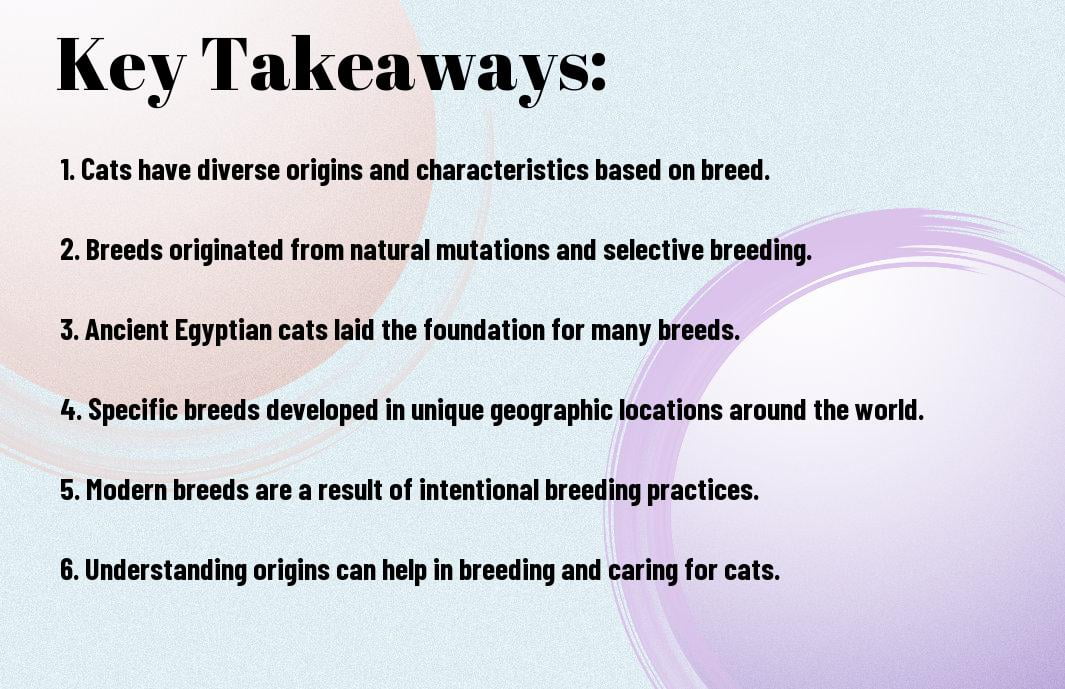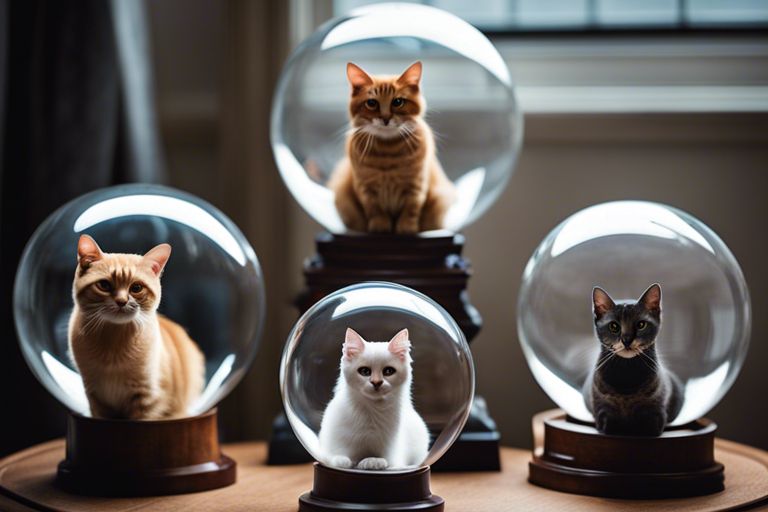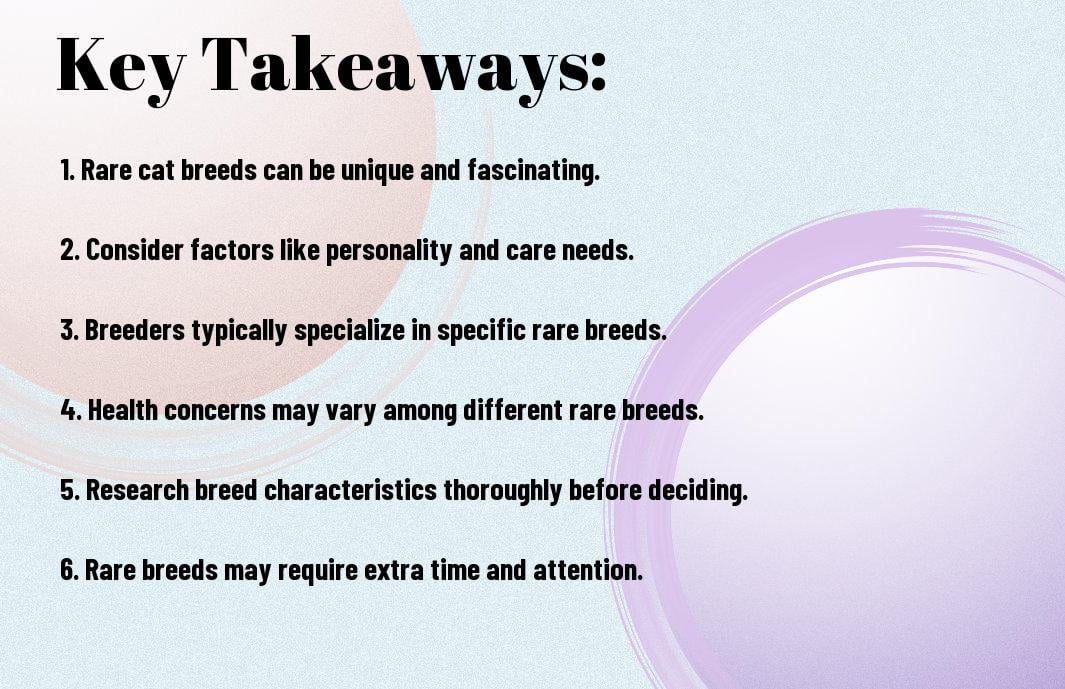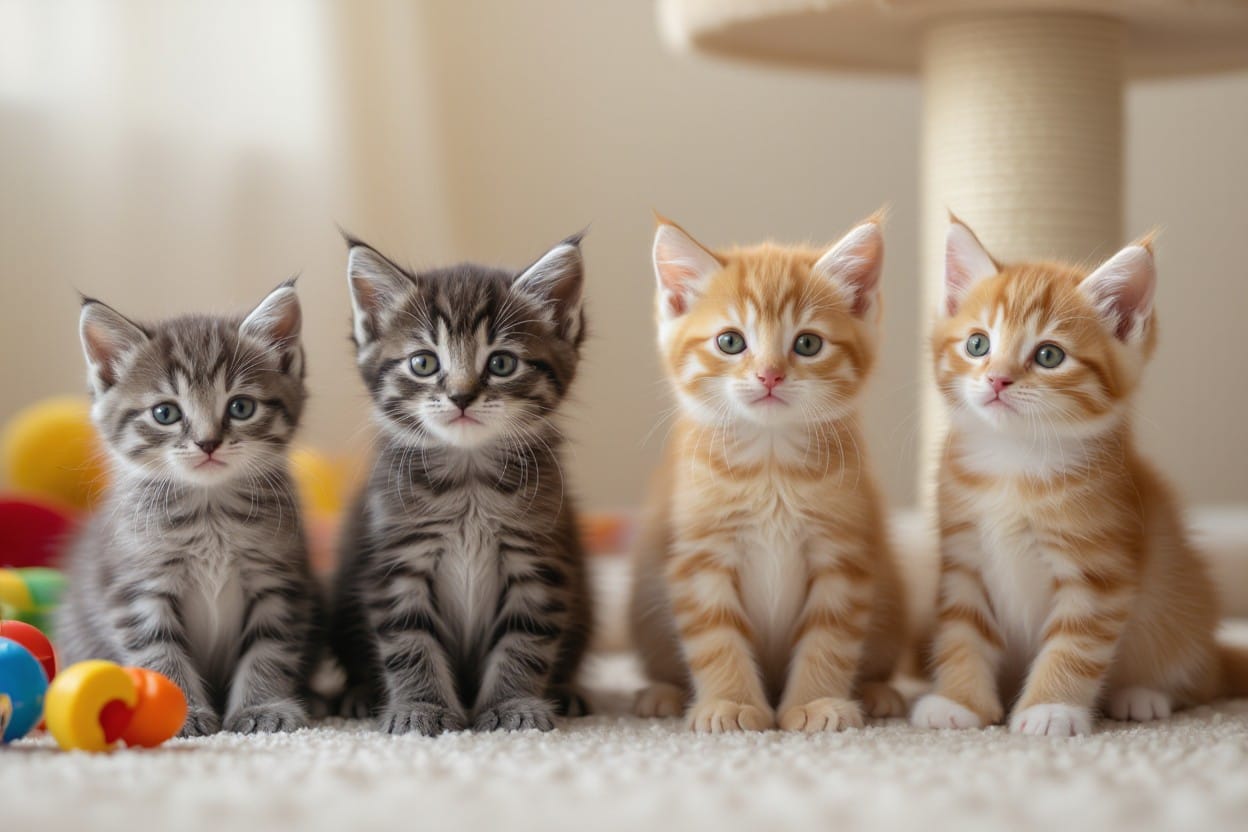With a rich history dating back thousands of years, domestic cats have been bred for various characteristics and appearances, leading to the diverse range of cat breeds we see today. Understanding the origins of these breeds can provide fascinating insights into the development and evolution of our feline companions. From the ancient Egyptian Mau to the modern Siamese, each breed has a unique story to tell about its origins and how it came to be recognized as a distinct breed.


History of Cat Domestication
Early Domestication and Human-Feline Relationships
Little is known about the exact origins of cat domestication, but it is believed that cats began to form a relationship with humans thousands of years ago. Unlike dogs, which were actively domesticated for specific purposes, early cats likely chose to live near human settlements to take advantage of the resources available. This mutual benefit led to a gradual domestication process where cats began to rely on humans for food and protection, while humans appreciated their companionship and pest control abilities.
Ancient Cat Breeds and Cultural Significance
Any ancient civilizations, such as the ancient Egyptians, Greeks, and Romans, revered cats for their mysterious and independent nature. Cats were often depicted in art and literature, symbolizing fertility, protection, and even divinity. In ancient Egypt, cats were associated with the goddess Bastet, who was believed to protect the home and bring good luck. These cultural beliefs solidified the bond between humans and cats, leading to the development of early cat breeds that were prized for their unique characteristics.
Ancient cat breeds such as the Egyptian Mau and Turkish Van are believed to have descended from these ancient felines that were valued for their beauty, hunting skills, and companionship. These breeds still exhibit traits that have been passed down through generations, highlighting the enduring influence of ancient human-feline relationships on modern cat breeds.
Human-Feline relationships have evolved over centuries, shaping the diverse cat breeds we know today. By understanding the origins of various cat breeds, we can appreciate the deep-rooted connection between cats and humans that continues to enrich our lives.
Genetics of Cat Breeds
Basics of Feline Genetics and Breed Evolution
Some of the most common cat breeds that we see today have fascinating genetic origins that trace back thousands of years. Cats have 38 pairs of chromosomes, and genes on these chromosomes dictate their physical traits such as coat color, pattern, and body structure. The evolution of different cat breeds is primarily influenced by genetic mutations that arise spontaneously or through selective breeding practices.
How Mutation and Selective Breeding Shape Breeds
An necessary factor in the development of distinct cat breeds is mutation. Mutations in genes can lead to variations in coat color, fur length, ear shape, and other physical characteristics. Selective breeding is another crucial aspect that shapes breeds over time. Breeders choose cats with specific desirable traits, such as a short, plush coat or unique eye color, to reproduce and pass on these characteristics to future generations. This deliberate selection process helps solidify the breed’s characteristics and distinct appearance.
Classifying Cat Breeds
The Criteria for Cat Breed Classification
For centuries, cat breeds have been classified based on a set of criteria that include physical attributes, genetic lineage, and distinct behavioral characteristics. Breed standards are established by cat breed associations to maintain the integrity of each breed and ensure that certain traits are preserved.
Recognized Cat Breed Categories
Breeds are divided into categories based on common characteristics such as coat length, pattern, and body type. The major recognized cat breed categories include short-haired breeds, long-haired breeds, natural breeds, hybrid breeds, and exotic or wild-inspired breeds.
It is imperative for cat enthusiasts to understand the various recognized cat breed categories to appreciate the diversity and uniqueness of each breed. Each category has its own set of defining features and specific care requirements, making it important for potential cat owners to choose a breed that fits their lifestyle and preferences.
Major Cat Breeds and Their Origins
Now let’s research into the fascinating world of major cat breeds and their origins. Cats have a long history of companionship with humans, leading to the development of various breeds through natural evolution and human intervention.
Natural Breeds and Their Evolution
Their origins can be traced back to natural breeds, which evolved over centuries in different regions of the world. These cats adapted to their environments, developing unique characteristics and traits that helped them survive in their habitats. Examples of natural breeds include the Maine Coon from North America, the Siamese from Thailand, and the Persian from the Middle East.
Hybrid Breeds and Human Influence
Hybrid breeds, on the other hand, are the result of human intervention through selective breeding. Humans have played a significant role in creating new breeds by crossbreeding different types of cats to produce desired traits or appearances. The Bengal cat, for example, is a hybrid breed created by crossing domestic cats with Asian leopard cats.
Another notable example of human influence on cat breeds is the Scottish Fold, known for its unique folded ears. This breed was developed in Scotland in the 1960s through a natural mutation that was then selectively bred to maintain the trait.

Cat Breeds Around the World
The Impact of Geography on Cat Breeds
Many factors have influenced the development of various cat breeds around the world, with geography playing a significant role. The climates and environments in different regions have shaped the characteristics of cats in each area. For example, cats in colder regions may have developed thicker fur coats to withstand harsh winters, while cats in warmer climates may have shorter coats to stay cool.
The availability of food sources in different regions has also influenced the breeding of cats. Cats in areas abundant with fish may have developed a liking for seafood, while those in agrarian societies may have adapted to a diet rich in rodents. These geographical influences have resulted in a diverse range of cat breeds with unique physical and behavioral traits.
Unique Breeds from Various Continents
Around the world, there are unique cat breeds that have originated from various continents. From the sleek Siamese cats of Asia to the hearty Maine Coons of North America, each continent has contributed distinct breeds to the feline world. These breeds showcase the diversity of characteristics that have evolved in cats to adapt to their specific environments.
Preservation of Rare and Ancient Breeds
Challenges in Preserving Pure Breeds
Preserving pure breeds, especially rare and ancient ones, faces several challenges in today’s rapidly changing world. One of the main obstacles is gene pool limitation, as these breeds have a smaller population size, making it difficult to maintain genetic diversity. Inbreeding is a significant concern, leading to health issues and reducing the breed’s overall viability.
Conservation Efforts and Organizations
Breeds that are rare or ancient require dedicated conservation efforts to ensure their survival for future generations. Various organizations around the globe focus on preserving these unique breeds. These organizations work towards increasing awareness, promoting responsible breeding practices, and collaborating with breeders and researchers to safeguard the genetic health and well-being of these special felines.
Conservation organizations play a vital role in connecting breed enthusiasts, providing resources for breed preservation, and fostering collaborations that support the longevity of rare and ancient cat breeds. By working together to protect these precious feline lineages, we can help maintain the diversity and heritage of these extraordinary cats for years to come.
The Future of Cat Breeding
Emerging Trends in Breeding Practices
With advancements in genetic research and technology, the future of cat breeding is poised to see a shift towards more precise and responsible breeding practices. Breeders are increasingly turning to DNA testing to screen for hereditary diseases and to ensure healthier breeding stock. This trend is not only promoting the overall health and well-being of cats but also helping to preserve breed standards.
Ethical Considerations in Breed Development
An important aspect of the future of cat breeding is the ethical considerations that breeders must take into account when developing new breeds or refining existing ones. Practices such as inbreeding and extreme breeding for exaggerated physical traits are increasingly being scrutinized due to concerns about the welfare of the animals involved. Breeders are now more conscious of the importance of maintaining genetic diversity and avoiding detrimental health consequences in their breeding programs.
Practices that prioritize the long-term health and well-being of the cats over aesthetic preferences will likely become more prevalent in the future of cat breeding. Responsible breeders are focusing on producing cats that not only meet breed standards but also lead healthy and happy lives. It is crucial for the future of cat breeding to balance the preservation of breed characteristics with the ethical treatment of the animals involved.
To wrap up
With these considerations, it becomes evident that the origins of various cat breeds are as diverse as the breeds themselves. From ancient Egyptian royalty to European explorers and Asian traders, cats have traveled the world alongside humans, adapting to different environments and developing unique characteristics along the way. Understanding the history and backgrounds of different cat breeds can provide valuable insights into their behavior, preferences, and health needs.
By delving into the origins of various cat breeds, we can appreciate the rich tapestry of feline history and the ways in which human societies have influenced the development of different breeds. This knowledge can also help cat owners better care for their beloved pets by tailoring their care routines to suit their cat’s breed-specific traits. Ultimately, understanding the origins of various cat breeds can deepen our appreciation for these fascinating creatures and enhance our relationships with them.
FAQ
Q: What are the origins of the Siamese cat breed?
A: The Siamese cat breed originates from Thailand (formerly Siam) and is one of the oldest and most recognizable breeds in the world. They were considered sacred and were kept by royalty in ancient times.
Q: Where do Maine Coon cats come from?
A: Maine Coon cats originate from the United States, specifically the state of Maine. They are one of the largest domesticated breeds and are known for their friendly and sociable nature.
Q: What is the history behind the Persian cat breed?
A: The Persian cat breed is believed to have originated in Persia (modern-day Iran) and was introduced to Europe in the 1600s. They are known for their long, luxurious fur and sweet temperament.
Q: How did the Bengal cat breed come into existence?
A: The Bengal cat breed was created by crossing domestic cats with the Asian Leopard cat. This hybridization resulted in a unique breed known for its striking coat patterns and energetic personality.
Q: What is the background of the Ragdoll cat breed?
A: The Ragdoll cat breed was developed in the 1960s in California, USA. They are known for their relaxed and docile nature, often going limp like a ragdoll when picked up, hence their name.














